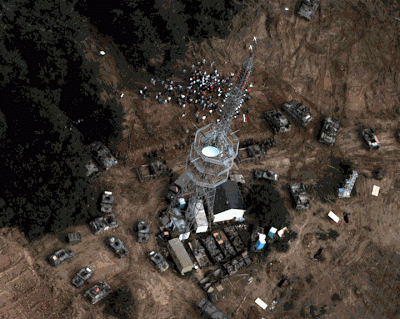My Role in Information Warfare during the Yugoslav Wars
Today in Airpower History, August 30, 1995: NATO and U.S. aircraft began airstrikes on Serbian ground positions in Bosnia-Herzegovina to support the U.N. Operation Deliberate Force. The airstrikes, with a Bosnian-Croatian ground attack, convinced the Serbs to accept peace terms in late 1995.
I'm not particularly fond of commemorating airpower campaigns, but the Tweet did remind me of the small part I played in the Yugoslav Wars of the 1990s. Many Americans remember the 1990s, and especially the Clinton presidency, as a "quiet decade" between the first Gulf War led by President GHW Bush and the so-called "Global War on Terror" led by President GW Bush. Instead of a quiet decade, I remember a an exceptionally busy time for the Air Force, including some of the first "information operations" that combined digital and physical effects.
In fact, fifteen years ago, almost to the week I believe, I volunteered to deploy from San Antonio to Joint Analysis Center (JAC) Molesworth in the UK. They needed intelligence support in the targeting shop, so as an Air Force intel officer I fit the bill. I decided to volunteer to go to the UK over the holidays (through early January) at a time of my "choice," rather than wait for the inevitable call to deploy to the desert, where US forces were still conducting counter-Iraqi operations.
Besides other targeting duties, the most interesting aspect of the shop was a requirement we received concerning a counter-propaganda campaign. Serbian Radio Television (SRT) was broadcasting fairly vile and false information to undermine the peace process. The Stabilization Force (SFOR) commander asked the JAC for options to shut down SRT transmissions, i.e., how to conduct "offensive counterinformation" operations against the Serbs.
We did some technical analysis of the SRT communication infrastructure and determined that if a certain set of transmission towers were "out of commission," that would end the broadcast problem. Part of the shop thought 500 lb bombs would be the best answer. Others thought we should apply a nondestructive approach and simply seize the towers by surrounding them with troops and tanks.
The photo in this post, attributed to the 55th Combat Camera Company, tells you what happened the morning of 1 October, 1997. SFOR seized four towers (Hill 619 in Duga Njiva is depicted), effectively terminating the SRT propaganda campaign. SFOR didn't destroy anything, but it conducted an information warfare operation to achieve the desired objective -- control of adversary mass communication.
If you'd like to read more about the history and theory of this operation, please see Physical Attack Information Operations in Bosnia: Counterinformation in a Peace Enforcement Environment by Major Arthur N. Tulak. I haven't yet read Memory, the media and NATO: information intervention in Bosnia-Hercegovina by Monroe Price, but it also discusses the same operation.




Comments